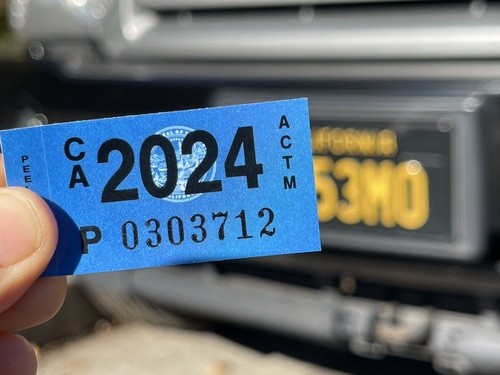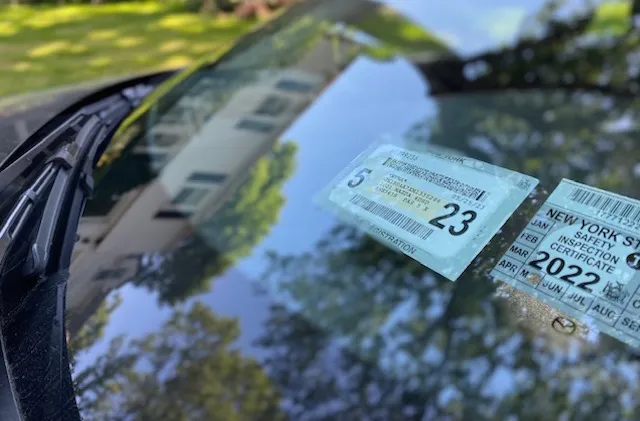Not sure where to place your vehicle registration sticker? It should go on the back license plate, where it’s clearly visible and meets most state laws. This location helps ensure it’s easy to see and stays securely in place. Want some easy tools and tricks to apply it properly? Keep reading for simple, practical tips to help you get it done right.
What Vehicle Registration Stickers Are For
Registration stickers show that your car is officially registered and has passed all necessary checks. They’re typically applied to either the license plate or the windshield, depending on your state’s rules. Knowing why they matter and how they’re issued helps you stay on the right side of the law.
Purpose of Registration Stickers
These small adhesive labels confirm that your vehicle is properly registered with your local DMV. They display your registration expiration date and prove you’ve met all legal requirements, including fee payment and any needed inspections.
Each sticker is tied to one specific car and helps law enforcement quickly verify your registration status. States have different placement rules, so always check your local guidelines to make sure it’s installed in the correct spot.
How the DMV Provides Stickers
The DMV issues registration stickers when you first register your vehicle or renew an existing registration. These stickers must be applied where the law requires, showing that your vehicle is road-legal.
If your sticker is damaged or lost, you can request a replacement from the DMV. There may be a small replacement fee, so try to keep your sticker in good condition and properly placed.

How to Get Ready for Sticker Application
Before you stick the registration label, make sure you’ve got the right tools and that the surface is clean. This helps the sticker stay on securely and look neat.
Tools You’ll Need
Using the proper materials makes the process go more smoothly. You’ll need rubbing alcohol, a clean sponge, and glass cleaner. These help clean the area where the sticker will go. Have your new sticker ready too.
- Rubbing Alcohol: Removes oil or dirt for a clean surface.
- Sponge: Use a soft sponge to avoid scratching.
- Glass Cleaner: Helps eliminate streaks and residue.
Getting everything together first saves time and makes installation easier.
How to Clean the Application Area
Clean the area where the sticker will go. Spray the glass cleaner and wipe the area gently with the sponge. Then, use rubbing alcohol to get rid of any grease or oils. Let it dry completely before applying the sticker.
Taking time to clean thoroughly helps the sticker stick better and last longer.
How to Properly Apply Registration Stickers
It’s important to place your sticker in the correct spot and apply it properly. This section will show you how to do that step-by-step.
Finding the Right Spot
Most states require the sticker to go on a specific corner or flat section of your license plate. Look for a marked area or just use the same spot as your old sticker. Be sure to follow your state’s specific rules to avoid a fine.
Placing the sticker correctly makes it easy for police or inspectors to check. A neatly applied sticker also keeps your car looking good and legal.
Tips for Straight, Secure Sticker Placement
Wipe the area clean again if needed. Start by peeling part of the sticker backing, then line it up carefully. Press down gently to attach it. As you press, peel the rest of the backing and smooth the sticker down with your fingers.
Apply steady pressure to remove air bubbles. This helps the sticker stay on firmly and last longer without peeling or fading.
How to Remove and Replace Stickers
Swapping out an old sticker for a new one is easy with the right technique. Here’s how to do it without leaving sticky messes behind.
Removing the Old Sticker
Use a hair dryer or heat gun to soften the adhesive. Then, use a plastic scraper to lift the corner gently. If needed, a metal razor or box cutter can work, but be cautious not to scratch the plate.
Apply rubbing alcohol or baby oil to remove sticky residue. Use a damp sponge to wipe clean. Take your time to avoid damage.
Placing the New Sticker
Clean the area one last time. Peel the backing off your new sticker, align it carefully, and press down evenly. Smooth out air bubbles using your palm or fingers.
A clean, tight seal will help the sticker stay readable and in place for its entire life span.
Keeping Your Registration Sticker in Good Shape
Proper care of your registration sticker helps it stay intact and easy to read. Here are simple maintenance tips.
Clean Regularly: Wipe your plate gently with a damp cloth to keep dirt and grime off.
Prevent Peeling: Press the edges firmly and smooth out bubbles to stop the sticker from lifting.
Shield from Harsh Weather: Park in the shade or garage when you can. This protects the sticker from sun or rain damage.
Replace When Needed: When it’s time for a new one, gently peel off the old sticker. Use water or oil to loosen leftover glue.
Check Other Stickers: Inspection stickers need the same attention. Make sure they stay clear and legible.
Following these simple steps will help your sticker last longer and keep your car compliant.
Know the Laws and Stay Compliant
Staying informed about registration laws can help you avoid penalties. Understand when your sticker expires and what could happen if you ignore the rules.
Renewing Before Expiry
Every registration sticker has an expiration date. The DMV usually sends a reminder before it runs out. This will include everything you need to renew, either online or in person.
Renew as soon as possible and apply your new sticker right away. This helps avoid tickets or extra paperwork.
What Happens If You Don’t Comply
Ignoring registration sticker rules can lead to trouble. Some states issue a warning ticket that lets you fix the problem without paying a fine. But if you delay too long, you could be fined $100 or more.
Keeping your sticker valid and properly placed helps you avoid legal issues and ensures you’re always good to go on the road.

